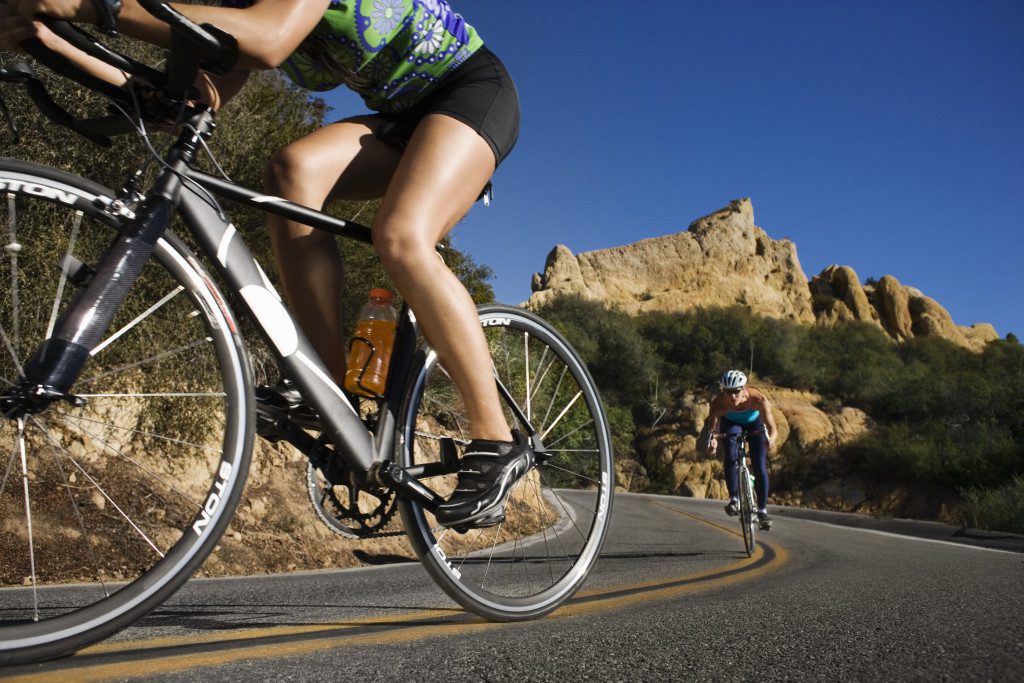Training tips: Go long to improve performance

Training for a half or full distance triathlon this year? The cornerstone to any good long distance tri training plan is the long swims, rides and runs each week. To be successful at longer distances, one must gradually increase their overall volume of training.
While the importance of adding and increasing the intensity of workouts should also increase over time, many find that a simple increase in the total time spent swimming, riding or running in lieu of harder/more intense sessions, can and will create significant improvements to one’s performance.
The reasons for adding more kilometres (or in the case of swimming, metres) and why it improves performance are well established:
- Aerobic capacity. The more the heart and lungs have to work, the stronger and more efficient they become and the more they can handle over time.
 Vascularization. Your veins and arteries are the body’s highway which transport blood to and from the lungs and heart to the working muscles. Over time, endurance sports increase the total number as well as the strength and durability of these highways making for a more efficient transit system.
Vascularization. Your veins and arteries are the body’s highway which transport blood to and from the lungs and heart to the working muscles. Over time, endurance sports increase the total number as well as the strength and durability of these highways making for a more efficient transit system.- Mitochondria. Mitochondria are the so-called “power plants” of any given cell including the heart, lungs and muscles. They are responsible for creating the energy needed to run fast and far. Training more stimulates more mitochondria to be made as well as to function more efficiently.
- Fat burning and metabolism. The body has a preferred method of getting the fuel it needs to move faster and farther. It begins with readily available blood sugars then quickly transitions to stored, but still easily accessible, carbohydrates in the form of glycogen. Once glycogen starts to run out, the body uses fats to create energy. Repeated bouts of swimming, cycling and running trains the body to quickly and efficiently use the energy it needs including a greater proportion from fats.
- Technique and economy. The more you train, the better the body becomes at adapting to ideal form. In the case of swimming, this means cleaner strokes. With running, your body will choose the gait and stride that minimize energy use and maximize efficiency. This improves one’s overall economy in the particular discipline.
Adding distance to your workouts more can be done in several ways but ultimately comes down to two things:
 Frequency: How often are you training?
Frequency: How often are you training?
Adding more wokrouts to your weekly training is probably the most obvious way to increase your mileage but you also shouldn’t neglect the important time off between sessions. If you can get in the water, on the trainer, or out for a run one or two more days per week without compromising recovery, give it a try. Keep those ‘extra’ sessions short and easy. Another option is to add a second workout to your easy days. Make sure this doesn’t replace the brick: performing back-to-back workouts and training twice in one day with hours apart produce different results and have different purposes in triathlon.
Duration/distance: How much time do you spend training?
Simply adding a few minutes to any kind of workout, be it easy, hard or long sessions, will go far to increase the total time spent training. In the water, this could be just a few hundred more metres. On the bike, maybe 10 kilometres. Just five more minutes spent running will really add up and eventually equal one extra full workout in a week.
Make no mistake, training more will improve your performances in the long run. You will however need to be patient as the body needs adequate time to adapt and make the necessary changes. It must be noted that training more also carries an increased risk of injury which is why it’s essential to increase gradually while still emphasizing rest and recover.

